
The German Shepherd Dog (GSD or the Alsatian, as he’s known in Britain and Ireland) is one of the most popular dog breeds in the world. Originally bred specifically for herding sheep, the German Shepherd has been widely used for many different types of jobs, including search and rescue missions, military and police service, helping the disabled, and so on. Due to their strength, obedience, intelligence and trainability, the GSD has become one of the most beloved dog breeds out there, making them the second-most popular dog breed according to the American Kennel Club.
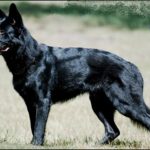

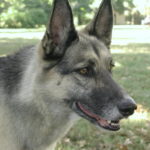
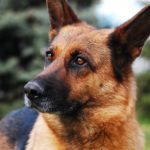
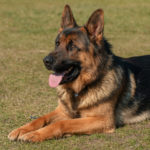
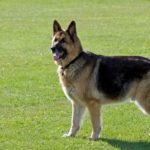
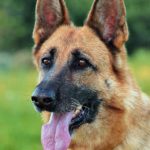
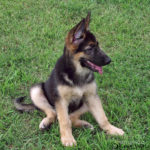
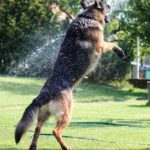
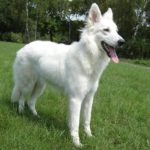
Did You Know?
- German Shepherds are very active and intelligent dogs. If you want to keep one as a pet, it’s a good idea to provide them with daily exercise routines like playing frisbee or having dog training sessions that will keep them both physically and mentally active.
- If you’re planning on getting one as a pet, get ready to vacuum and brush them frequently as German Shepherds are known to shed quite often (some people even nickname them the German “Shedder”).
- German Shepherds make for great watchdogs. However, they also enjoy staying indoors with their family. Having a fenced yard to let them run around and use up their energy is probably a good idea, too.
- If you have a hectic schedule and are out of the house a lot, German Shepherds might not be the breed for you. When left alone for long periods of time, German Shepherds can become bored and anxious and start acting out by barking, digging, and chewing a lot.
- German Shepherd dogs are naturally suspicious of strangers, but they are also highly trainable. If you expose a German Shepherd puppy to many different places, people, and experiences early on, they’ll be more used to being around strangers and other pets.
- Veterinarians recommend crate training for puppies, and this might be especially helpful for German Shepherds, who often suffer from separation anxiety when left alone. Giving them their own little space to call their own can help them feel safe and less anxious when you’re away.
German Shepherd Breed Characteristics
Adaptability
Adapts Well to Apartment Living: 3.5/5
Good for Novice Owners: 2.5/5
Tolerates Being Alone: 1.5/5
All-Around Friendliness

Affectionate with Family: 5/5
Dog-Friendly: 3/5
Friendly Toward Strangers: 4/5
Health Grooming

Amount of Shedding: 4/5
Easy to Groom: 4/5
General Health: 4/5
Trainability

Easy to Train: 5/5
Intelligence: 5/5
Tendency to Bark or Howl: 5/5
Exercise Needs

Energy Level: 5/5
Exercise Needs: 5/5
Potential for Playfulness: 5/5
 History of German Shepherds
History of German Shepherds
Back in 1800’s Europe, the continental shepherd dog was widely used to herd sheep and as a guard dog to protect farms and homes. However, it was around 1890 that the continental shepherd started disappearing and separating into the three different shepherd breeds we know today: Belgian Shepherd, Dutch Shepherd, and of course, the German Shepherd.
Thanks to his steadfastness and leadership in reaching his goal, Captain Max von Stephanitz is credited as being the creator of the German Shepherd as we know it today. Max von Stephanitz, a former cavalry captain and student of the Berlin Veterinary College, was a member of the Phylax Society, a dog club that aimed to create a standardized plan for naive dog breeds in Germany. The society disbanded due to internal conflicts; some believed dogs should be bred for working and others believed they should also be bred for appearance. Stephanitz belonged to the former group.
Stephanitz longed for a dog who had all the characteristics he thought a good working dog should have: strength, intelligence, and ability. He often found dogs who met one of the characteristics, but not all of them at the same time. After attending a dog show in 1899, Stephanitz found the perfect dog: Hektor Linksrhein. The product of selective breeding from a few generations, Stephanitz was highly impressed by the dog’s beauty, intelligence, and loyalty and purchased him immediately. He renamed the dog Horand von Grafrath and founded the Society for the German Shepherd Dog (GSD). It is from Horand von Grafrath that all modern German Shepherds descend from.
Since the industrial age was bringing an end to the popularity of rural farm work, Stephanitz had to find other jobs in which the German Shepherd dog breed goocould be useful besides sheep herding. Making use of his military connections, Stephanitz convinced the German government to use the breed for military and police services.
German Shepherds served as Red Cross dogs (messenger, search and rescue, supply carrier, etc.) during World War I. After the war, German Shepherds became popular in the U.S. due to soldiers bringing the dogs back with them, noting their intelligence and loyalty.
One of these dogs was rescued by an American corporal from a bomb-riddled kennel. The corporal brought the five-day-old german shepherd puppy back with him to Los Angeles and turned him into one of the biggest Hollywood stars of the time: Rin Tin Tin. This helped German Shepherds become a household name and German Shepherd dogs have become synonymous with loyalty, courage, and strength.
Besides reaching popularity in the form of Rin Tin Tin and becoming Hollywood famous, German Shepherds have fulfilled other jobs such as leading the blind, sniffing out illegal drugs, chasing down criminals, serving in the military, visiting and helping the sick, and of course, herding flocks. German Shepherds have become synonymous with police work in the U.S. and they were even used as search and rescue dogs during the aftermath of the 9/11 terrorist attacks in New York. They crawled through the ruins of the World Trade Center to find survivors and comforted both rescue workers and families in need.
Because of their characteristics, German Shepherds might be the ideal pets for some people but not others. Due to their protective and suspicious nature, they can be great watchdogs but is not the type of dog that will make guests feel welcome. If you raise a German Shepherd around different places and people, however, he will be able to adjust to new people and circumstances much easier when it’s an adult German Shepherd.
German Shepherd Size
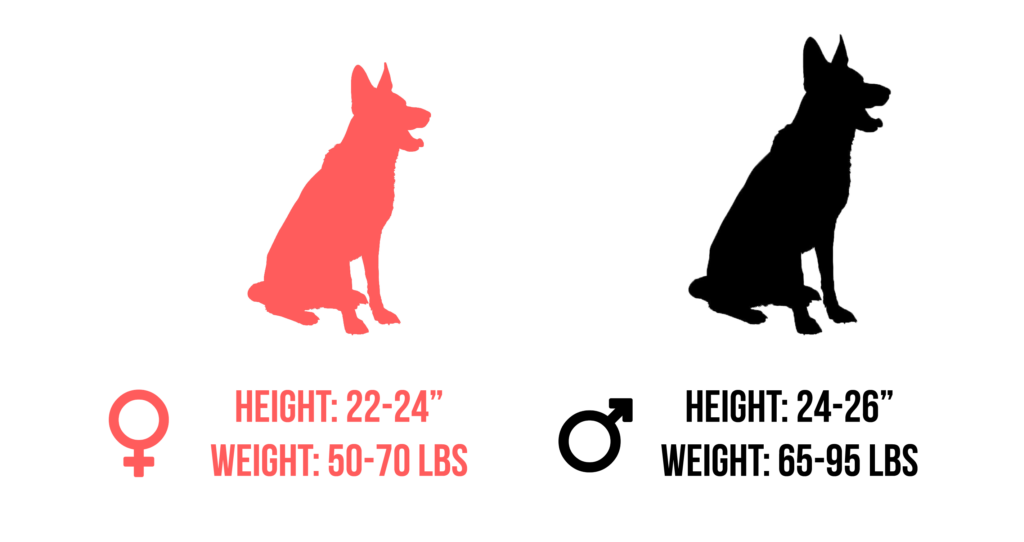 While not one of the heaviest/biggest dog breeds around, German Shepherds weigh between 50 to 95 pounds. Male German Shepherds stand about 24-26 inches, while females German Shepherds stand about 22-24 inches.
While not one of the heaviest/biggest dog breeds around, German Shepherds weigh between 50 to 95 pounds. Male German Shepherds stand about 24-26 inches, while females German Shepherds stand about 22-24 inches.
Appearance
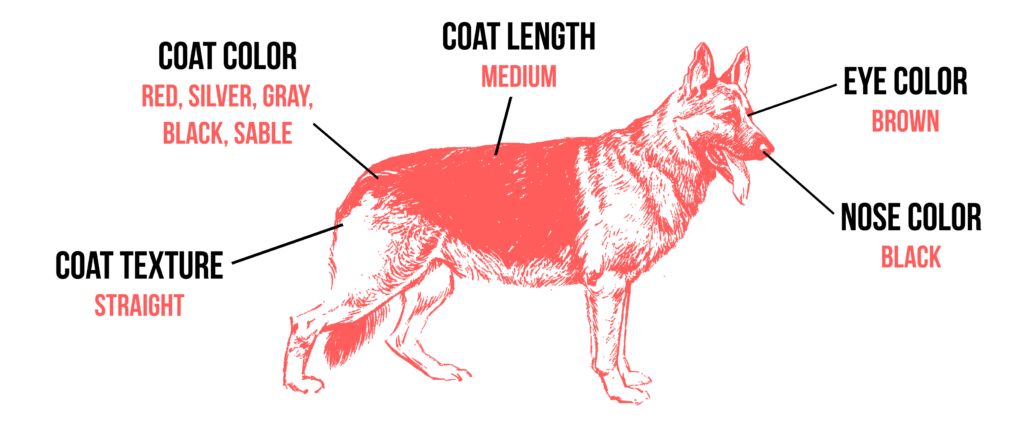 Since the original purpose of the GSD was to herd flocks of sheep and other animals through harsh climates, they have a medium-length double coat that protects them rain, snow, and even dirt. Not all German Shepherds have the same coat type; some are longhaired and others shorthaired. A double coat of medium length is generally the ideal size, especially if you’re interested in breeding.
Since the original purpose of the GSD was to herd flocks of sheep and other animals through harsh climates, they have a medium-length double coat that protects them rain, snow, and even dirt. Not all German Shepherds have the same coat type; some are longhaired and others shorthaired. A double coat of medium length is generally the ideal size, especially if you’re interested in breeding.
German Shepherds have a dense outer coat that has straight hair, which lies close to the body and is sometimes wavy and wiry. Coat colors come in different varieties and patterns such as black and red, black and silver, black and tan, blue, gray, etc. However, the most prominent color is black and cream. Some also have a white coat color, but because the American Kennel Club doesn’t recognize it as a color for German Shepherds they are not allowed to participate in conformation shows (but can compete in other shows).
Behavior
Personality
German Shepherds are not aggressive, but they are aloof, especially when first introducing yourself. They will not immediately warm up to you, but once they get to know you they become extremely loyal and affectionate. German Shepherds are approachable and enjoyable to be around once they consider you their friend, but they can be strong and protective when threatened, which makes them great watchdogs.
German Shepherds are very active and love to do just about anything. They are highly trainable and can be taught to do a number of things, including alerting a deaf person that the doorbell has rung and sniffing out avalanche victims, among other things. As mentioned before, one of the things German Shepherds don’t like is being left alone, and they will start acting out if done so for long periods of time. Exposing German Shepherds to different experiences and places early on will help them become well-rounded dogs as they grow up.
Children and Other Pets
German Shepherds are generally trustworthy around kids. However, the more exposure a German Shepherd has to kids, the better. If German Shepherd dogs are exposed to children as puppies, then the likelihood of it being a great companion for your kids is high. Keep in mind, though, that German Shepherds are big dogs and may bump a small kid. However, German Shepherds are very protective of their human family.
Adult German Shepherds will likely have problems accustoming to households with other pets and may need special training to do so. However, if an adult dog was raised along with other pets from puppyhood, then it will generally have no problems living in peace with other animals.
German Shepherd Health Problems
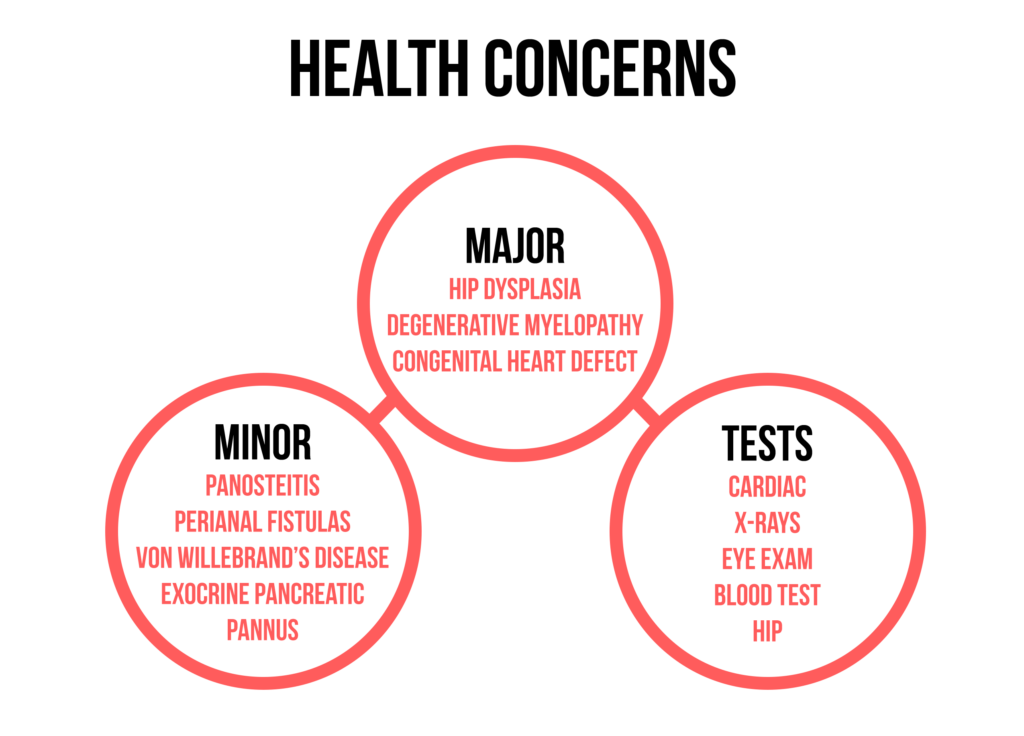 German Shepherds are generally healthy dogs, but there are certain conditions that affect their breed. While your individual dog may not suffer from any of the following conditions, it’s a good idea to keep them in mind. If you have access to your dog’s parents and their health records, make sure to get health clearances for both of them to make sure they’ve been tested and cleared from the following conditions. Health clearances can be confirmed by checking the Orthopedic Foundation for Animals (OFA) website.
German Shepherds are generally healthy dogs, but there are certain conditions that affect their breed. While your individual dog may not suffer from any of the following conditions, it’s a good idea to keep them in mind. If you have access to your dog’s parents and their health records, make sure to get health clearances for both of them to make sure they’ve been tested and cleared from the following conditions. Health clearances can be confirmed by checking the Orthopedic Foundation for Animals (OFA) website.
Gastric Dilatation and Volvulus
One of the more serious conditions your German Shepherd may suffer from is gastric dilatation and volvulus, or “bloat.” This condition particularly affects large, deep-chested dogs (like Golden Retrievers) and is life-threatening, so it should be taken seriously. When a dog suffers from bloat, their stomach becomes distended with air or gas and then twists, making it impossible for the dog to belch or vomit to rid itself of any excess air or gas. Blood is impeded from returning normally to the heart, blood pressure drops and the dog goes into shock.
In such condition, immediate medical attention is needed to prevent your dog from dying. Bloat may occur if your dog is fed one large meal a day, eats rapidly, drinks large amounts of water after eating, and exercises strenuously after eating. Keep an eye on your dog if you notice they are salivating excessively and are trying to vomit but can’t. Other signs may include restlessness, depression, lethargy, and weakness with a rapid heart rate. If you notice your dog suffers from any of these symptoms, consult a veterinarian immediately.
Hip Dysplasia
Hip Dysplasia is a heritable condition passed down from parent to pup where the dog’s femur doesn’t perfectly fit into the pelvic socket of the hip joint, which can cause pain and lameness on one or both rear legs. However, keep in mind that the condition can exist without clinical signs, which is why it’s important to screen your dog and have them X-rayed to make sure they don’t suffer from hip dysplasia. Dogs with hip dysplasia can also develop arthritis as they age.
Elbow Dysplasia
Another heritable condition which might affect your German Shepherd is elbow dysplasia, which is particularly common among large-breed dogs. A dog’s elbow is made up of three bones, and different growth rates of these bones may cause joint laxity and elbow dysplasia. Depending on the situation, your vet might either recommend surgery or simply medication to control the pain, as this condition can lead to painful lameness.
Exocrine Pancreatic Insufficiency
EPI is a genetic condition where the dog is unable to digest or absorb dog food. This is because the cells in the pancreas that produce digestive enzymes are destroyed. Symptoms may include weight loss, loss of appetite, gassiness, and change in stools. A simple blood test will help diagnose your dog. If found to have EPI, all you need to do is add pancreatic enzymes to your dog’s food. Most dogs recover when the condition is treated properly.
Degenerative Myelopathy
Dogs that suffer from degenerative myelopathy act as though they don’t know where their back legs are and cannot move them properly. The reason for that is because DM is a progressive disease that affects the part of the spinal cord that communicates information to the brain about a dog’s hind legs. Since it’s a progressive disease, it will continue to affect the dog until they cannot walk anymore. In most cases there is no treatment and the dog is usually put to sleep. Sometimes, however, the condition may be a result of a vitamin B12 or vitamin E deficiency, in which case supplements are given to help stabilize the condition.
Allergies
Allergies can range from contact to food allergies in a German Shepherd. If you notice your dog scratching, licking their paws, or rubbing their face constantly, then take them to the vet to make sure their allergies are under control.
Maintenance
Care
Since German Shepherds were originally bred to herd sheep all day, you can imagine how active they must be. Daily exercise is a must for German Shepherds. Whether they do physical exercises (like jogging or playing fetch) or mental exercises (like agility or obedience training german shepherd), it’s important to keep them active.
When left alone for long periods of time, they will act out. Their powerful jaws can destroy most materials, but they may also damage their teeth if they bite into the wrong surface. German Shepherds are also known for barking, which is why teaching your dog the “quiet” command is necessary as part of their German Shepherd training. Make sure you buy your dog the proper chew toys to keep them entertained while you’re away and so they don’t destroy your belongings or damage their teeth.
Feeding
When it comes to feeding, it really depends on your individual dog’s characteristics. The amount your dog eats depends highly on their size, age, build, metabolism, and activity level. However, on average, the recommended daily amount of food a German Shepherd should eat is three to four cups of high-quality dry food, divided into two meals. Use this as a reference rather than a rule.
If your dog is highly active, he will need more food than if he was a couch potato. Food intake also depends on quality – high-quality food will give him more nutrients which, in turn, means he will need to eat less food overall. You can test whether your dog is overweight or underweight by placing your hands on him with your thumbs along the spine and fingers along the sides. If you can easily see his ribs, then he’s too thin. If you can’t even see them because they’re hiding behind rolls of fat, then it means he must go on a diet.
Pay special attention to your German Shepherd when he’s a puppy. German Shepherd puppies tend to grow rapidly between the ages of four and seven months and, if not taken care of properly, they may develop joint and bone problems during this phase. At this time in their lives, it’s recommended that they eat a high-quality, low-calorie diet with 22%-24% protein and 12%-15% fat. Such a diet will keep them from growing too fast, which will help them in the long term.
Also, avoid having your GSD apuppy run and jump on hard surfaces (like concrete) during this time, as their joints are not fully formed, although playing on grass should be no problem. Overweight German Shepherds can suffer from joint problems among other health conditions, so it’s important to not overfeed them. Instead of leaving food out for your dog to eat whenever he wants, keep a regular schedule of food servings. By keeping him active, limiting his treats, and feeding him the right amount of high-quality food, your German Shepherd should grow up to be a healthy and happy companion.
Grooming
One of the nicknames given to the breed is “German Shedders” because they shed hair year-round. Twice a year they will usually hair a lot of hair at once. If you are planning on adopting a German Shedder, be prepared to have dog hair all over the house. While there is no perfect solution to shedding, brushing your dog two or three times a week will keep the hair mostly on your brush rather than your furniture.
If you’re thinking about bathing your dog, don’t do it often as it strips their coat of healthy oils. Even though German Shepherds are known to shed, they are otherwise very clean and odorless pets.
Other grooming tips include trimming their nails about once a month and checking their ears once a week (for dirt, redness, or bad odor, which might indicate an infection). When cleaning their ears, wipe them with a cotton ball that’s been dampened with a gentle, pH-balanced ear cleaner. Since they love to chew, it’s probably a good idea to buy them sturdy, safe dental chew toys or bones, as this will keep their teeth clean and they’ll be fighting tartar buildup while they chew.
Additional things that you can do to maintain their mouth care is to brush their teeth with a soft toothbrush and specially made dog toothpaste. This will help keep their gums and teeth in great shape.
Questions
How long do German Shepherds live?
A common question is what is the life expectancy of a German Shepherd? German Shepherds have an average lifespan of 10 to 14 years.
What do I feed a 3-month-old German Shepherd puppy?
For the most part, three feedings a day do well for puppies under six months. You should aim to keep your puppy a healthy lean, so you may need to alter your feeding based on your individual dog’s specific needs. If you want more information, check out this daily calorie calculator for dogs to figure out your dog’s specific needs and diets for large breed puppies.
How to distinguish between a German Shepherd and Alsatian dog?
Many dog lovers argue with each other about what makes a German Shepherd and an Alsatian dog different. Unfortunately, those arguments are a waste of time. Why? Because the German Shepherd and the Alsatian are one and the same.
German Shepherds have often been sought after to work in police forces and the military. The British armed forces were no different and considered the German Shepherd a great asset – but they didn’t like the name. It’s no surprise why, as they had just ended a war with Germany as their enemy. They decided to give the German Shepherd a new name – the Alsatian, based on the German-French border of Alsace-Lorraine, where the British fought a fierce battle against the Germans. Today, the Alsatian name has been replaced with the original and true name of the breed – the German Shepherd Dog.
Is it true that the German Shepherd Dog is part wolf?
Short answer: no. German Shepherd Dogs, like any purebred dog, is only bred with other dogs of the same breed. Part of the reason people wonder about the German Shepherd’s lineage is because of its look and another reason is that the British decided to rename him the Alsatian Wolf Dog. However, there is no recent ancestry shared with wolves.
Resources
Rescue Groups
Unfortunately, there are people who abuse animals and German Shepherds are no exception. If you’re interested in rescuing a German Shepherd and giving them a loving home, please visit the following websites to learn how you can help save a German Shepherd today:
- American German Shepherd Rescue Association
- German Shepherd Dog Club of America
- All Shepherd Rescue
- German Shepherd Rescue & Adoptions
Breed Organizations
When there’s a GSD puppy to adopt, you’ll be able to select from different types of German Shepherd puppies based on the type of the German Shepherd breeder. American breeders, for example, focus on breeding dog show champions that fit the look more than the abilities, while German breeders focus more on a German Shepherd’s working abilities, while still looking the part. The following is a list of breeding organizations in the United States:
- German Shepherd Dog Club of America
- United Schutzhund Clubs of America
- White German Shepherd Dog Club International, Inc
- World Class German Shepherd Dogs
Top German Shepherd Breeders
The following is a list of the most reputable German Shepherd breeders of 2017.
- Lundborg-Land German Shepherds (Perris, California)
- Select Shepherds (Grantham, New Hampshire)
- Kimberlite German Shepherds (White, Georgia)
- War Cry German Shepherds and Malinois (Phelan, California)
- Granville German Shepherds (Itasca, Illinois)
- Legend Shepherds Shepherds (Pasco, Washington)
- Vom Haus Velten German Shepherds (Pomona, New York)
- Vom Haus – world-class German Shepherd dogs
- Appleridge LLC (Griffin, Georgia)
- Sable Rock German Shepherds (Saint Peter, Minnesota)
- Hickory Hill German Shepherds (Elberfeld, Indiana)
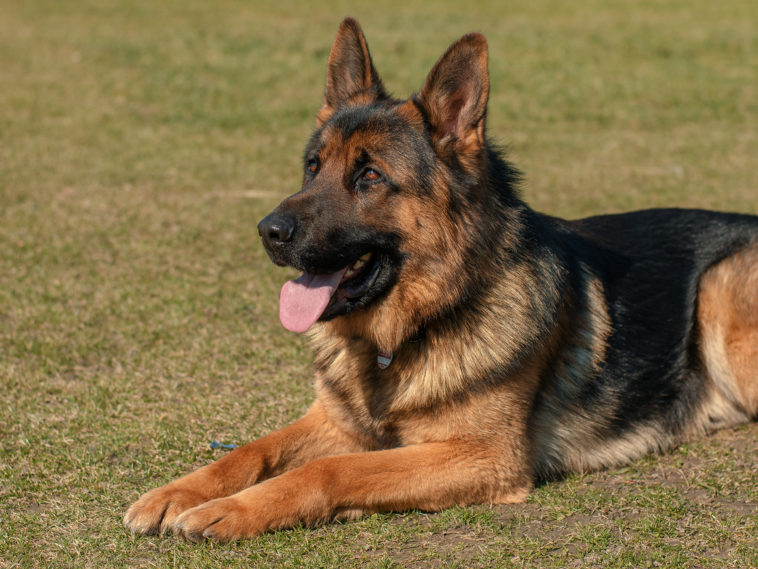

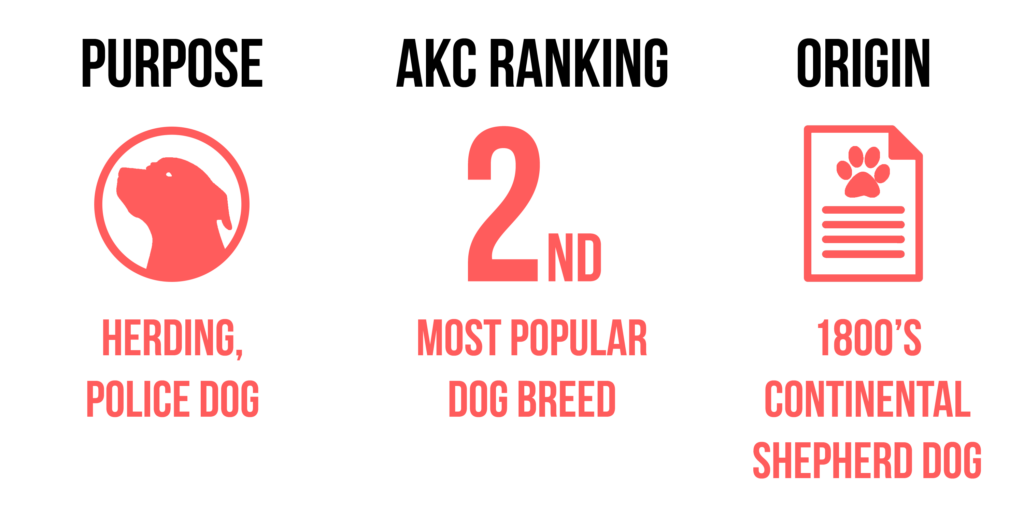 History of German Shepherds
History of German Shepherds